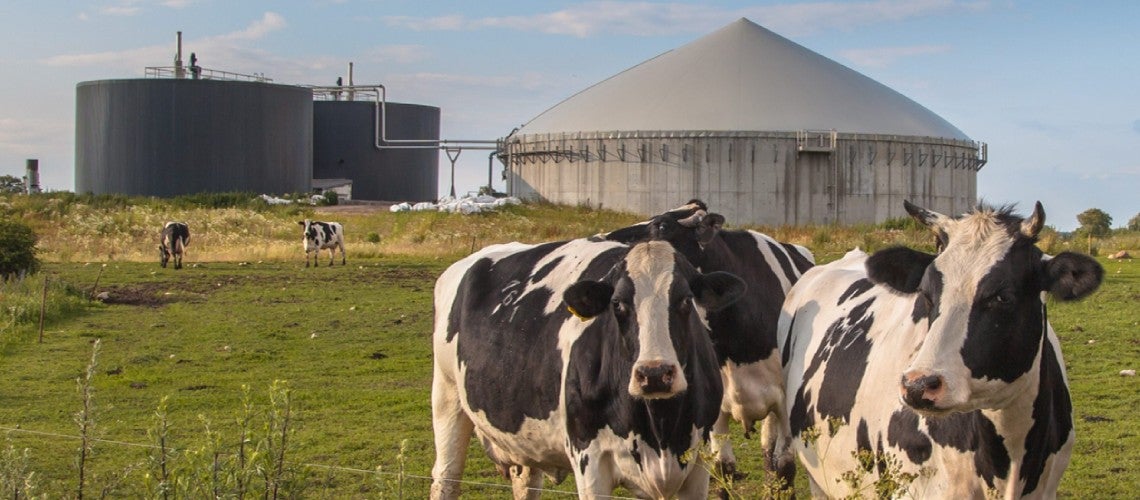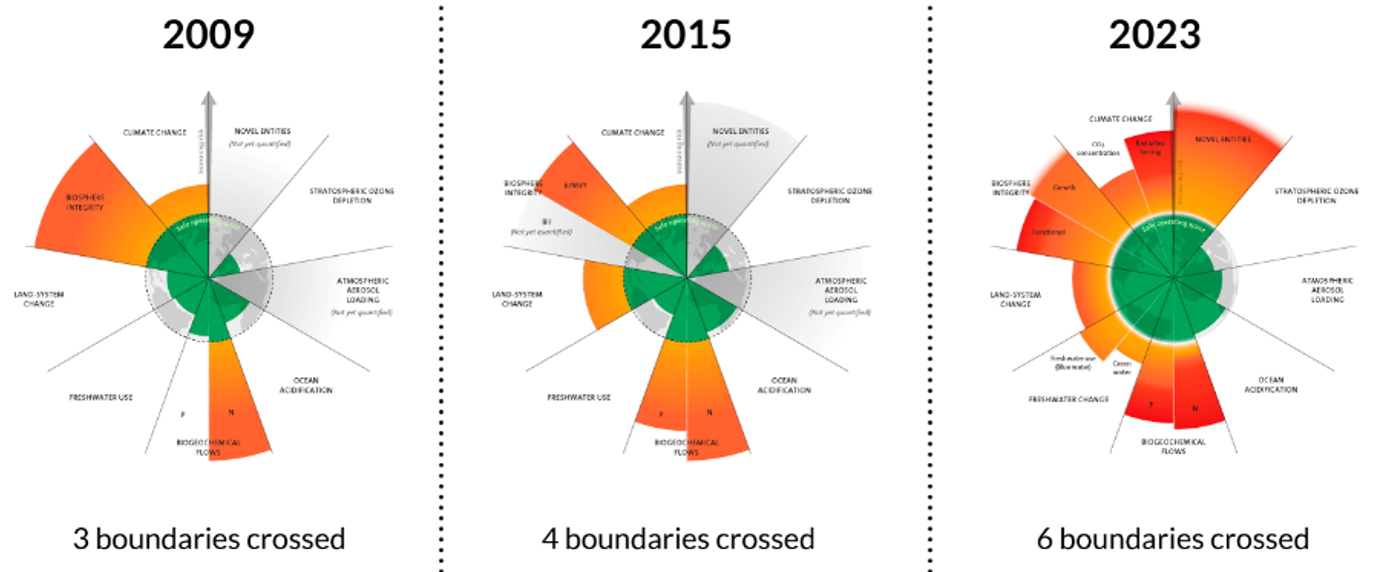 CreativeNature_nl
CreativeNature_nl
As we usher in 2024 with good vibes, let us pause to reflect on the health of our planet. In 2023, our world crossed six of the nine planetary boundaries that ensure a safe operating space for human society, namely climate change, biosphere integrity, land-system change, freshwater change, biogeochemical flows of nitrogen and phosphorus and novel entities including plastics.
The global food system, with its predominantly linear "take-make-consume-dispose" model, is a major driver for the crossing of all six boundaries. It is responsible for nearly 1/3 of global greenhouse gas emissions, 2/3 of deforestation and 2/3 of freshwater use. The over application of synthetic fertilizers and pesticides, which historically raised agricultural productivity, has also contributed to the degradation of a quarter of global soils and water pollution through runoffs. Further, inadequate animal waste disposal and burning crop residues also exacerbates air pollution. Together, the externalities generated by today’s linear food system – human health, environmental and social – amount to $12.7 trillion in hidden costs, equivalent to $35 billion in 2020 PPP dollars per day.
A growing number of planetary boundaries have been crossed since 2009

© Azote for Stockholm Resilience Centre, Stockholm University. Based on Richardson et al. 2023, Steffen et al. 2015, and Rockström et al. 2009, CC BY-NC-ND 3.0
Circularity as a solution
Rewiring the global agrifood system to design circular models offers a critical pathway towards building profitable, sustainable and low-emission food systems. In practice, this requires the intentional use of circular “reduce-reuse-recycle-remove” approaches that regenerate natural systems, reduce external inputs by closing nutrient loops, eliminate waste and pollution from agricultural production and food consumption, upcycle and recycle food by-products and minimize land, water and carbon footprints.
On the farm, circularity is embedded in integrated crop-livestock-forestry systems and regenerative practices like no-till farming and cover cropping, which have been historically utilized by farmers to build soil health and sequester carbon. In other settings, agribusiness are investing in anerobic digesters to convert agricultural waste to biogas and liquid fuel, thus generating renewable energy locally. Recent on-farm innovations also include agri-voltaic systems which enhance heat resilience and free up land by co-locating agricultural and solar energy production. More downstream, processing circularity includes upcycling of inedible by-products like the reuse of brewers’ spent grain to produce bread and pasta. At the consumption stage, South Korea’s recycling program collects and converts household food waste for feed, fuel and fertilizer production, leading to a 95% recycling of food and a lowering of the domestic food system’s carbon footprint.
Recent research by the Ellen MacArthur Foundation estimates that widespread adoption of circular food systems in the EU and the UK could increase food production by 50% and farm profits by $3,100 per hectare while cutting biodiversity loss in half and lowering greenhouse gas emissions by 70%. Other biophysical modeling shows that that adopting circular practices in the EU27+UK can significantly reduce agricultural land use, which could then be used to feed an additional 767 million people outside the EU. Despite significant expected benefits, the global circularity gap peaked in 2023. This reduction in circularity and increasing reliance on newly extracted fossil fuels and minerals needs to be urgently reversed, especially in the food system, where circular solutions are widely available.
Circularity around the world
To start, we recognized that redesigning our food system for circularity requires the development community to upgrade our own knowledge and advance learning among policymakers. Leveraging the Bank’s FoodSystems2030 knowledge platforms, we then proceeded to showcase benchmark policies, foundational investments, and sustainable business models. Recognizing the power of innovation, we examined the enabling role of digital technology at the 15th Global Forum for Food and Agriculture (GFFA) in January 2023. This panel shone light on how precision farming and value-chain traceability can enhance resource efficiencies and help certify regenerative production to deliver premiums in a growing market for sustainably produced food. In the following week, experts assessed the global potential for mainstreaming circularity. Here, we learnt how insect farming and hydroponics are reusing waste to rapidly produce nutritious food and feed in fragile settings in Africa, on-farm anerobic digesters in Uruguay are unlocking societal benefits, and finally, how agriculture support policies can advance the EU’s efforts to build a circular economy. Inspired by this knowledge, our team participated in Wageningen University’s pilot on circular farming for the Lighthouse Farm Academy, to observe firsthand how Finland’s organic farms, malt processers, and caraway exporters are mainstreaming circularity in their operations.
At the G20 Summit in September, circularity received wide endorsement through the launch of the Resource Efficiency and Circular Economy Industry Coalition (RECEIC). In December, the COP28 outcomes further recognized the role of circularity in sustainable production and consumption. Further, 27% of countries now refer to circular economy in their Nationally Determined Contributions, a strong sign of growing global momentum to build circularity in all sectors, including the food system.
The way forward
Coming back “full circle” as we start 2024 – we are incubating a program on Circular Food Systems to meet emerging demand from countries. In this program, we intend to examine the economics, trade-offs and transitions costs of circular food systems, deepen our efforts to mainstream circularity in World Bank operations, and accelerate our learning from countries that are global pioneers. To achieve this objective, we seek collaborations with partners across development partners, academia, and country clients seeking to implement circularity in their food systems. Working together, we can steer the food system to deliver healthy people, a healthy planet, and healthy economies. Most importantly, we invite you, the reader, to join us on this journey and share your own ideas in the comments about how we can advance circularity.





Join the Conversation